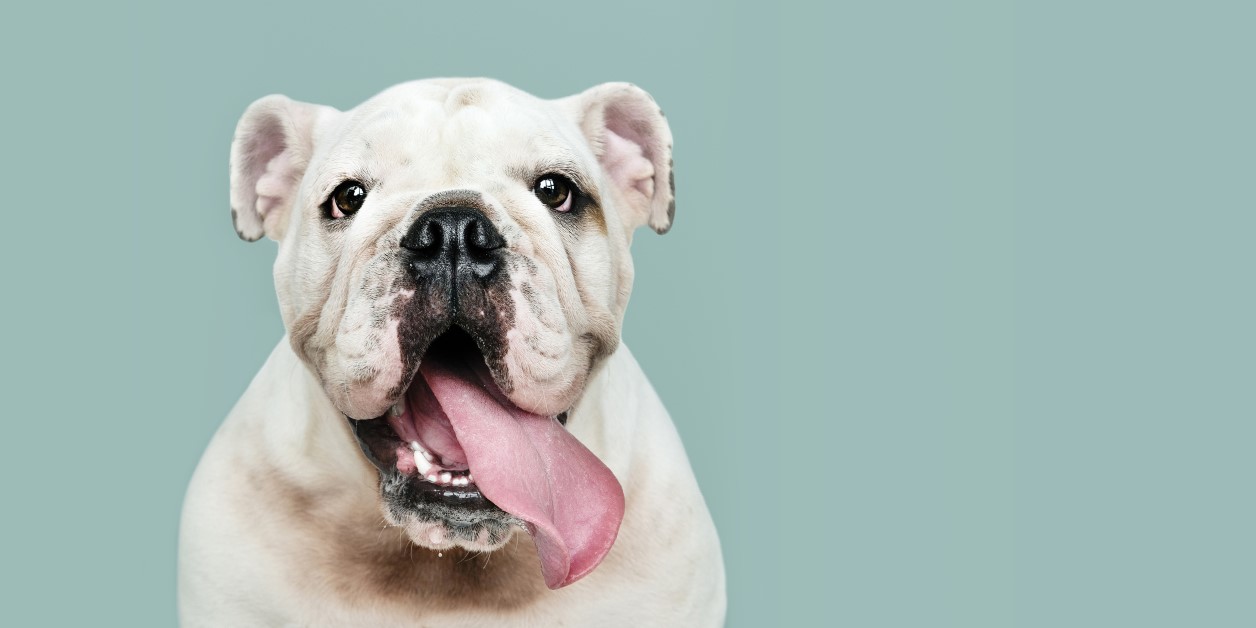Why Is My Dog Drooling?
While drooling in dogs is usually not a cause for concern, too much drool may indicate a health problem.

Drooling is simply a part of life for some dogs. Bernese Mountain dogs, bloodhounds, bulldogs, bull terriers, Newfoundlands, and Saint Bernards are just a few of the drooliest breeds. Due to the shape of the head and lips, these dogs are unable to contain all of the drool in their mouth, resulting in dripping and slobbering.
While most dogs drool on occasion, excessive drooling that occurs frequently may be a cause for concern. Learn more about why dogs drool, what’s normal when it comes to drooling, and what too much drooling could mean for your pet’s health.
What Type of Drooling Is Considered Normal?
While some breeds of dogs are simply prone to drooling, others may drool in response to certain triggers. Examples include:
- Offering food to your pet. Whether you’re handing over a piece of chicken or a dog treat, your pet may start to drool in anticipation. Drooling that occurs around food is normal and assists in the breakdown of food.
- Getting excited. Dogs will commonly drool when they experience excitement. Maybe you pulled out your dog’s favorite ball for a game of fetch or your pet spots a squirrel from across the yard. Some extra drool when your pet is excited is usually no reason to worry.
- Laying down or resting. Breeds that naturally produce large amounts of drool may exhibit excessive drooling while laying down or resting. Healthy drool is usually clear or white in color and relatively odorless.
What Causes Excessive Drooling in Dogs?
Excessive drooling could indicate a health problem with your dog. Problems can range from minor illnesses that are easily treated to medical emergencies that require immediate care from a vet. Here is a look at some of the most common causes of excessive drooling in dogs:
1. Mouth and Throat Disorders
Dogs with mouth or throat disorders may experience drooling issues due to the inability to swallow properly. There are many conditions that affect the mouth or throat, such as plaque buildup on the teeth, neurological or muscular conditions, or even a tumor in the mouth or throat. With help from your vet, you can obtain a proper diagnosis and create a treatment plan to help your pet treat or manage the condition.
2. Stomach Issues
Certain stomach issues may cause your dog to drool. Some dogs will drool if they eat something that upsets their stomach. When this happens, the dog will usually get better within a day or two. More serious stomach conditions can also cause excessive drooling, such as when your pet consumes something toxic, such as a plant poisonous to dogs. In this case, your vet may recommend inducing vomiting to remove the poison from your pet’s system.
3. Heat Stroke
It’s not uncommon for pets to overheat in warm weather, especially dogs with thick layers of fur. Animals are also not able to cool themselves down by sweating like humans do, meaning they are less equipped to regulate their body temperature. Early signs of heatstroke in pets can include drooling, along with other symptoms like panting, restlessness, red gums or tongue, vomiting, diarrhea, and increased heart rate. Advanced stages of heat stroke can lead to lethargy, weakness, confusion, seizures, and collapse.
4. Tooth Decay
Even if you do your best to care for your dog’s teeth, tooth decay can develop. An accumulation of tooth decay can sometimes cause discomfort and affect your pet’s ability to effectively chew food. If the decay is not removed, it can eventually result in an infection or abscess. Dental problems in dogs can result in a variety of symptoms, such as drooling, tooth discoloration, bleeding from the gums, and bad breath. If you think that your pet’s drooling is caused by dental issues, contact your vet to schedule a dental cleaning.
5. Kidney Disease
Kidney disease is fairly common in pets, affecting 1 in 10 dogs. This condition can have many causes, ranging from congenital defects at birth to acute injuries that harm the organ. It can be difficult to identify kidney disease in dogs until the condition has progressed to advanced stages. Some of the most common symptoms include frequent urination, weight loss, drinking more water, loss of appetite, nausea, and vomiting. Drooling can also occur due to pain or nausea associated with the disease.
6. Foreign Object
Dogs use their mouths to explore the world around them. Sometimes, their curiosity can get the better of them and they may get into something that they shouldn’t. Foreign objectives can become caught in the dog’s mouth, on the tongue, or between the teeth, causing symptoms like pain, swelling, and drooling. Your dog may try to paw at his face to remove the foreign object, indicating that something is amiss.
Final Thoughts
It’s not uncommon for dogs to drool and seeing your pet slobber is usually not a cause for panic. However, you will want to try and pinpoint the cause of the drooling if it continues or becomes more frequent.
If you are worried about your dog’s excessive drooling, schedule an appointment with your vet. Your vet will perform a physical exam and recommend further testing if necessary, such as X-rays, blood tests, and possibly an endoscopy to further investigate.
Treatment for excessive drooling will depend on the cause. Your vet will provide advice and recommend a treatment plan designed to help your pet recover as quickly as possible.
Ready to start saving money on pet wellness care?
Then take a look at Mint Wellness, the pet wellness plan that provides fast reimbursement on routine pet care. Save on vaccinations, wellness exams, preventatives, dental, and more!
Learn More


